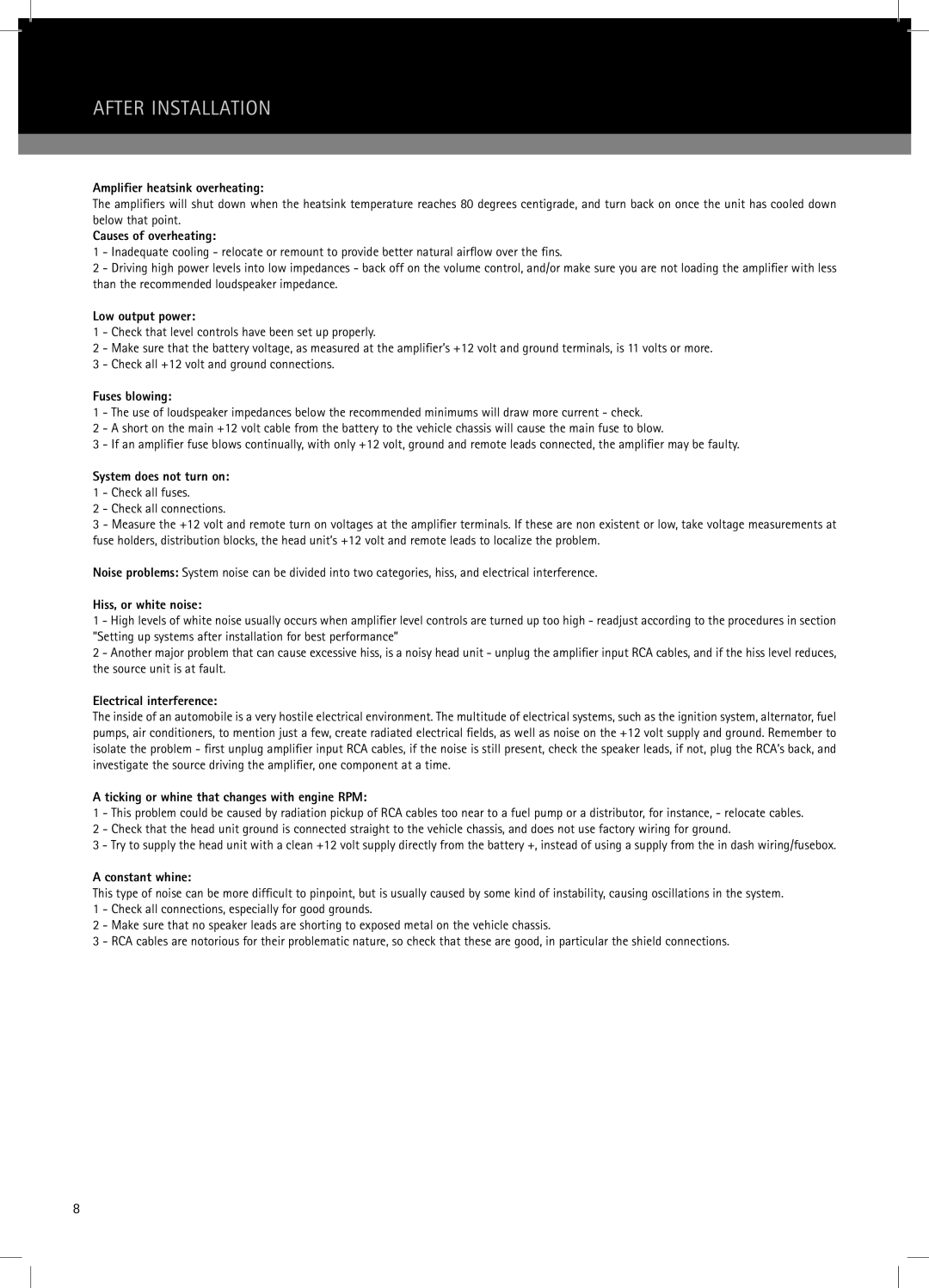RAB 1450 specifications
The MB Quart RAB 1450 is a formidable addition to the realm of automotive audio systems, specifically designed for drivers who demand both high performance and clarity in their sound experience. Known for its robust construction and innovative technologies, this amplifier is an ideal choice for those looking to upgrade their vehicle's audio system.One of the standout features of the RAB 1450 is its power output. With a peak power of 1450 watts, this amplifier ensures that every note, from the deepest bass to the highest treble, is delivered with exceptional clarity and intensity. It operates efficiently with a Class D design, which not only produces powerful sound but also keeps heat generation at manageable levels. This means that users can enjoy extended listening sessions without worrying about overheating or performance degradation.
The RAB 1450 is equipped with a variable low-pass crossover, allowing users to customize their audio experience by controlling which frequencies are sent to their subwoofers. This feature is particularly beneficial for those who like to fine-tune their sound to match their personal preferences or their vehicle's acoustic characteristics.
Another notable characteristic of the RAB 1450 is its built-in protection circuitry. This feature safeguards the amplifier against potential damage from overloads or short circuits, ensuring a long lifespan and reliable performance. Additionally, the amplifier has adjustable gain control that helps users optimize the output level for their specific audio setup, enhancing both sound quality and clarity.
The construction of the RAB 1450 is designed with durability in mind. Featuring a sleek and rugged chassis, it withstands the rigors of automotive environments. The amplifier also utilizes high-quality components that enhance sound quality and reliability.
Installation is made easy with user-friendly connections and a compact size that fits in most vehicles without hassle. The MB Quart RAB 1450 is not just an amplifier; it represents a commitment to quality and performance, making it an exceptional choice for any audiophile seeking to elevate their mobile sound system.
In conclusion, the MB Quart RAB 1450 stands out in the crowded marketplace of car audio amplifiers with its powerful output, advanced features, and dependable construction. It is a prime choice for those who desire an immersive and customizable listening experience while on the road.

